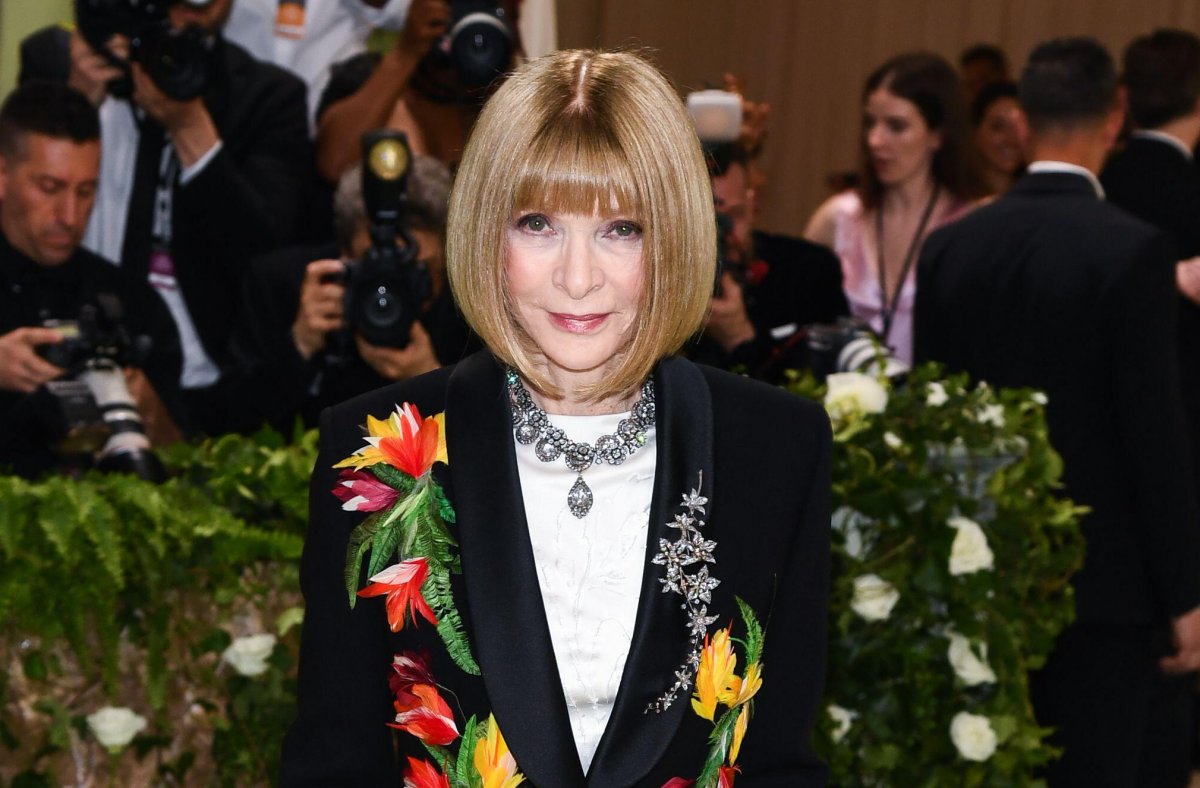
At Monday’s Met Gala, Dame Anna Wintour sparkled in her signature pieces of antique jewelry, including a pair of necklaces and an eye-catching floral brooch, and a coat with an intriguing Danish royal connection.
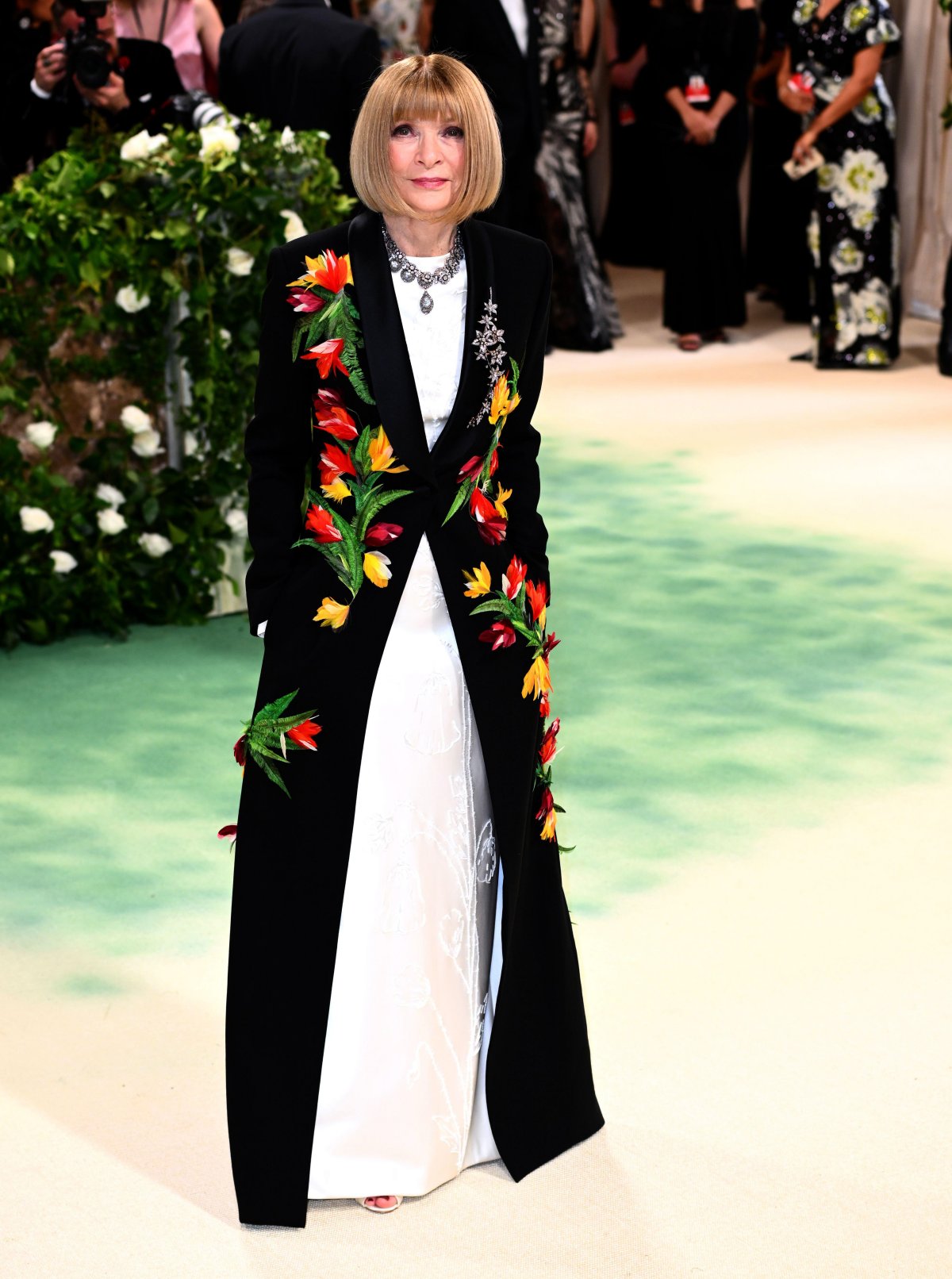
On the first Monday in May, the Costume Institute of the Metropolitan Museum of Art in New York hosts its annual fundraising gala, known colloquially as the Met Gala. Dame Anna Wintour, the Global Editorial Director of Vogue, is one of the museum’s trustees, and she has raised so much money for the museum that the wing housing the Costume Institute collection is now known as the Anna Wintour Costume Center. Wintour is also the Met Gala chair, and she works closely with Costume Institute curator Andrew Bolton to establish a theme for each year’s gala, which is also reflected in a special exhibition at the museum.
This year, Wintour and Bolton opted for a dual theme. The Costume Institute’s spring exhibition for 2024 is Sleeping Beauties: Reawakening Fashion. The display focuses on the fact that clothing from the museum’s collections can no longer be worn. The Met website notes, “When an item of clothing enters the Costume Institute collection, its status is changed forever. What was once a vital part of a person’s life is now a motionless ‘artwork’ that can no longer be worn or heard, touched, or smelled. This exhibition reanimates these objects, helping us experience them as they were originally intended—with vibrancy, dynamism, and life.” The exhibition includes pieces from a range of designers, including Cristóbal Balenciaga, Hubert de Givenchy, and Elsa Schiaparelli. Sponsorship for this year’s exhibition was provided by the Spanish luxury fashion house Loewe and by TikTok.
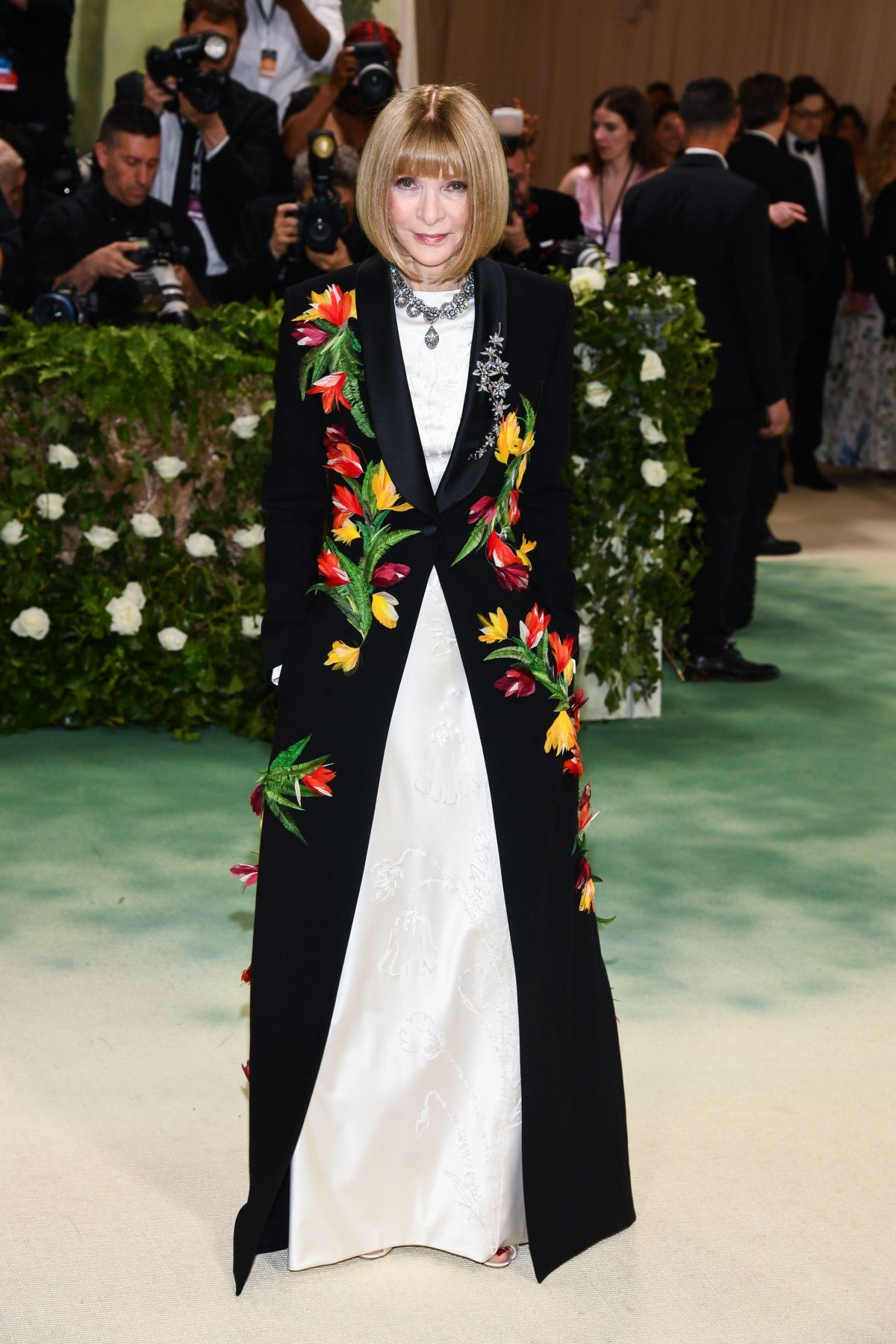
Perhaps sensing that “Sleeping Beauties” would be a difficult theme to translate to ensembles for the gala’s attendees, Wintour and Bolton chose to set a second, related theme for the gala itself. “Sleeping Beauties” highlights the fragility of fashion as an artistic medium, and the gala’s theme, “The Garden of Time,” also taps into that idea. Wintour gave an interview to Today ahead of the gala, and an accompanying article noted, “For benefit invitees, the dress code is inspired by a 1962 short story by J.G. Ballard called “The Garden of Time,” which means attendees can use the concepts of time, fragility or florals to build their looks.” Vogue also published an extended explanation, including a synopsis of the story itself.
Wintour told Today that she was planning to incorporate florals into her look for the gala. When she stepped on to the ivory carpet, she was wearing long black coat from the exhibition’s sponsor, Loewe, that was richly embroidered with flowers in shades of red, yellow, and green. According to the brand, the bespoke design took inspiration from “a circa 1944 evening cape by 20th century designer Charles James and tailoring from the Loewe Fall Winter 2024 women’s collection,” adding that the “tuxedo in wool with a silk satin shawl collar is decorated with floral motifs using hand-dyed feathers, tonal beading, and pearl embroidery.” The dress worn underneath the coat was also made by Loewe. The black Charles James cape referenced in the description is part of the Costume Institute collection.
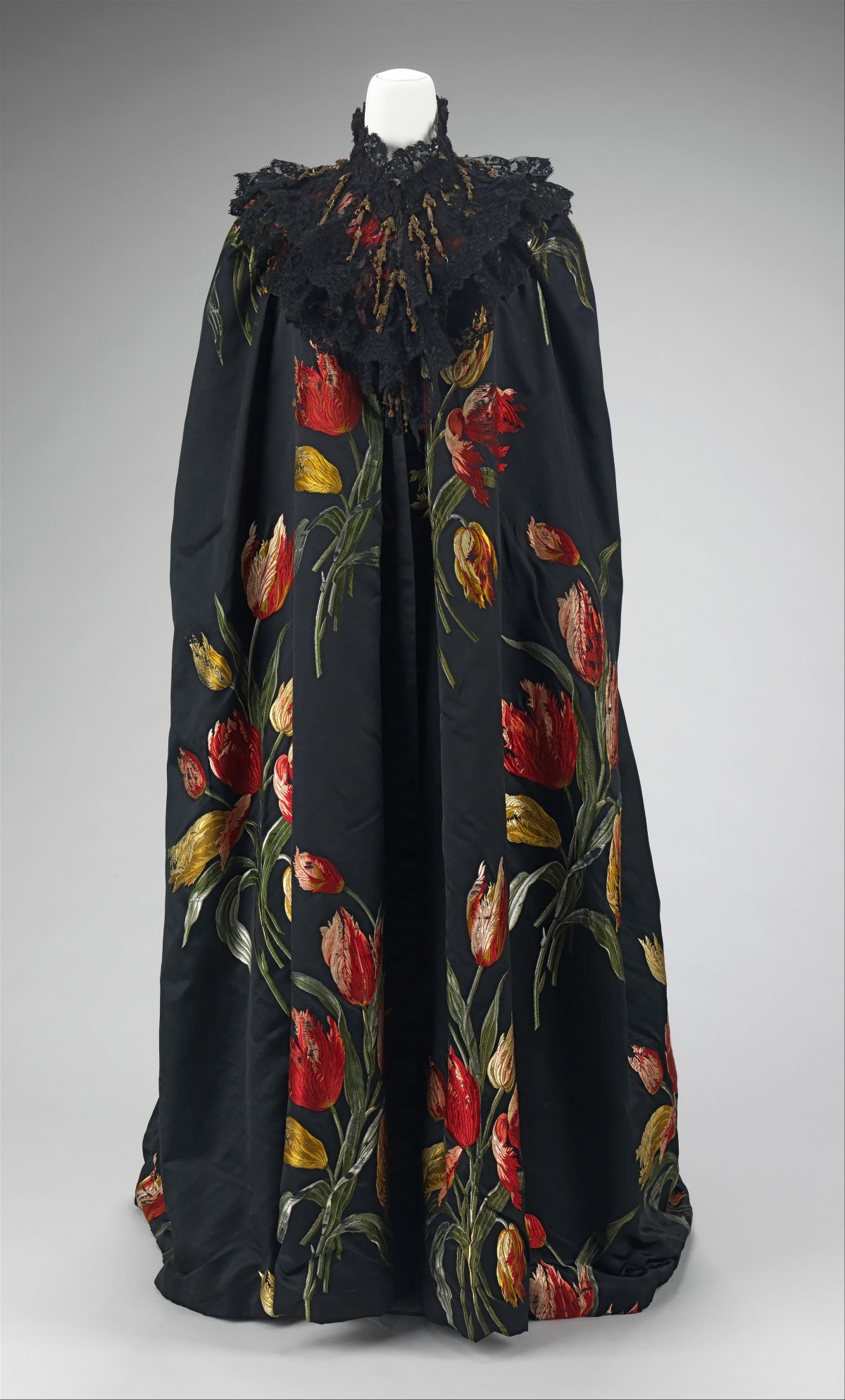
But there was clearly another inspiration in the mix as well. The Costume Institute also holds this embroidered floral evening cape. The garment, which dates to 1889, was designed by Charles Frederick Worth using a textile manufactured by the French firm A. Gourd & Cie. The dramatic, intricate textile, called “Tulipes Hollandaises,” was exhibited at the Exposition Universelle of 1889 in Paris, where it won a grand prize.
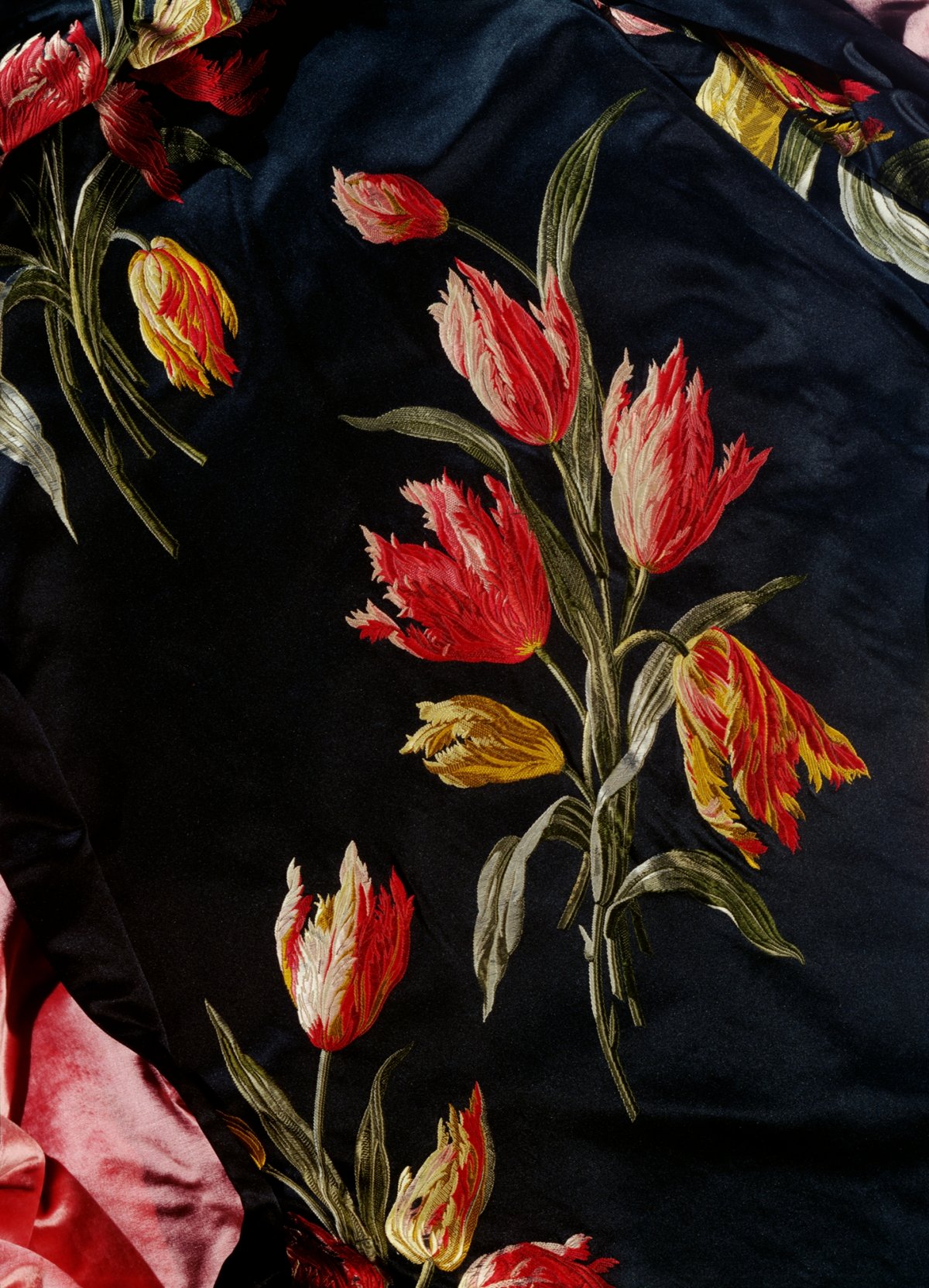
The museum website explains, “The tulips have an aggressive dynamic quality about them with the brilliant, vibrant colors against the deep black background consistent with the seductive femme fatale sensibility of the 1880s and 1890s.” The visual echoes of this textile in the flowers on Wintour’s Loewe tuxedo jacket are clear.
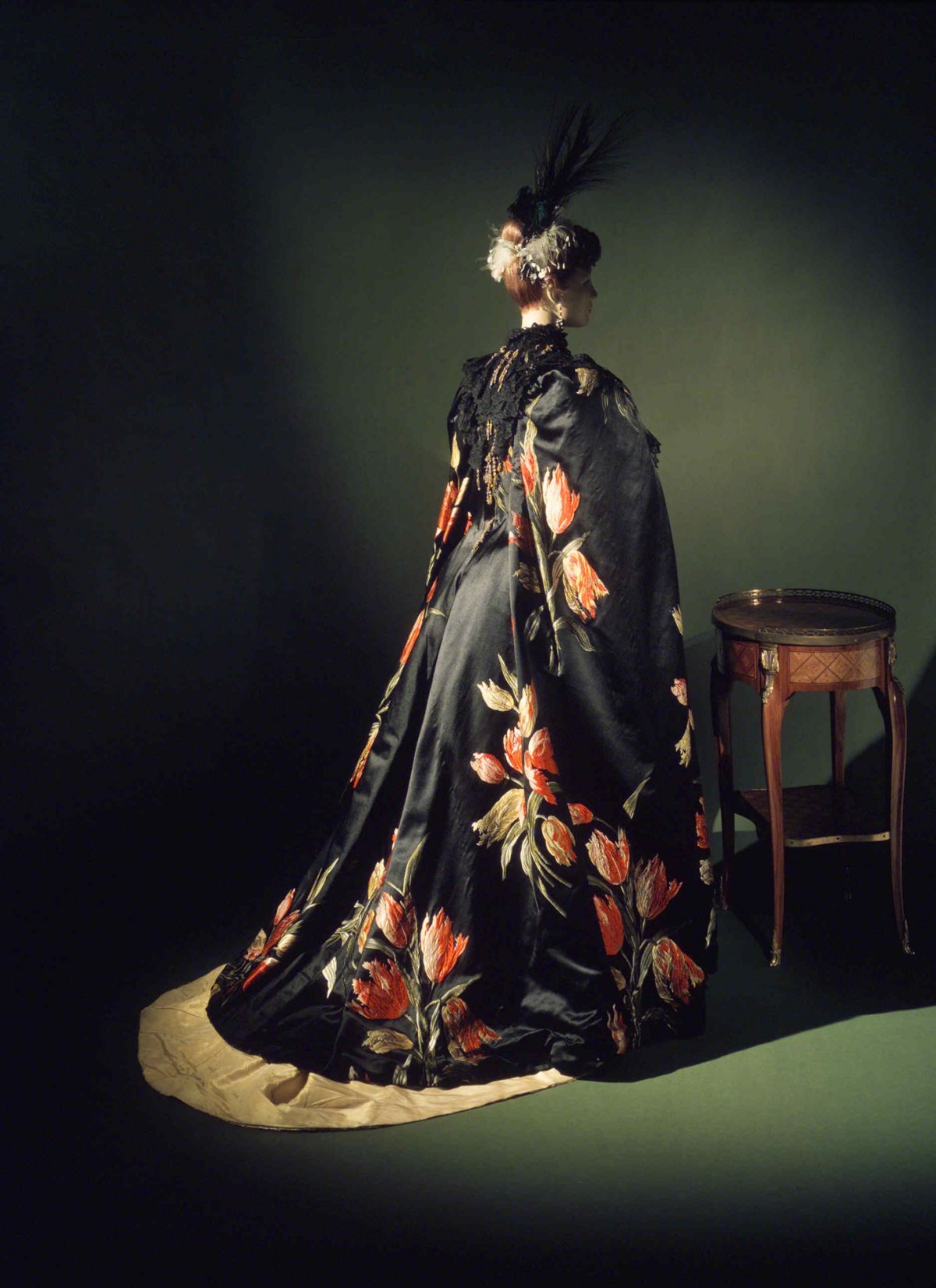
The Worth cape has been in the Costume Institute collection since 2009, when the American Costume Collection of the Brooklyn Museum was transferred to the Met. Before that, the garment had resided at the Brooklyn Museum since 1931. Here’s where the Danish royal connection comes in. The museum’s notes on the cape describes it as the “gift of the Princess Viggo in accordance with the wishes of the Misses Hewitt” to the Brooklyn Museum in 1931. Princess Viggo was born Eleanor Margaret Green in New York in 1895. Through her mother, Eleanor was a descendent of both the Cooper and Hewitt families, industrialists and philanthropists who are deeply ingrained into the history of New York.
Eleanor married Prince Viggo, a grandson of King Christian IX and Queen Louise of Denmark, in New York in 1924, but she remained close to members of her family in America even after moving to Denmark with her new husband. The “Misses Hewitt” in the cape description were Eleanor’s aunts, Sarah and Eleanor Hewitt. The sisters founded the Cooper Union Museum for the Arts of Decoration, collecting more than 50,000 items for the museum collection during their lifetimes. Eleanor died in 1924, and Sarah passed away in 1930. Princess Viggo subsequently followed the wishes noted by her aunts and donated their fabulous House of Worth cape to the Brooklyn Museum, and now the garment is part of the collection at the Met.
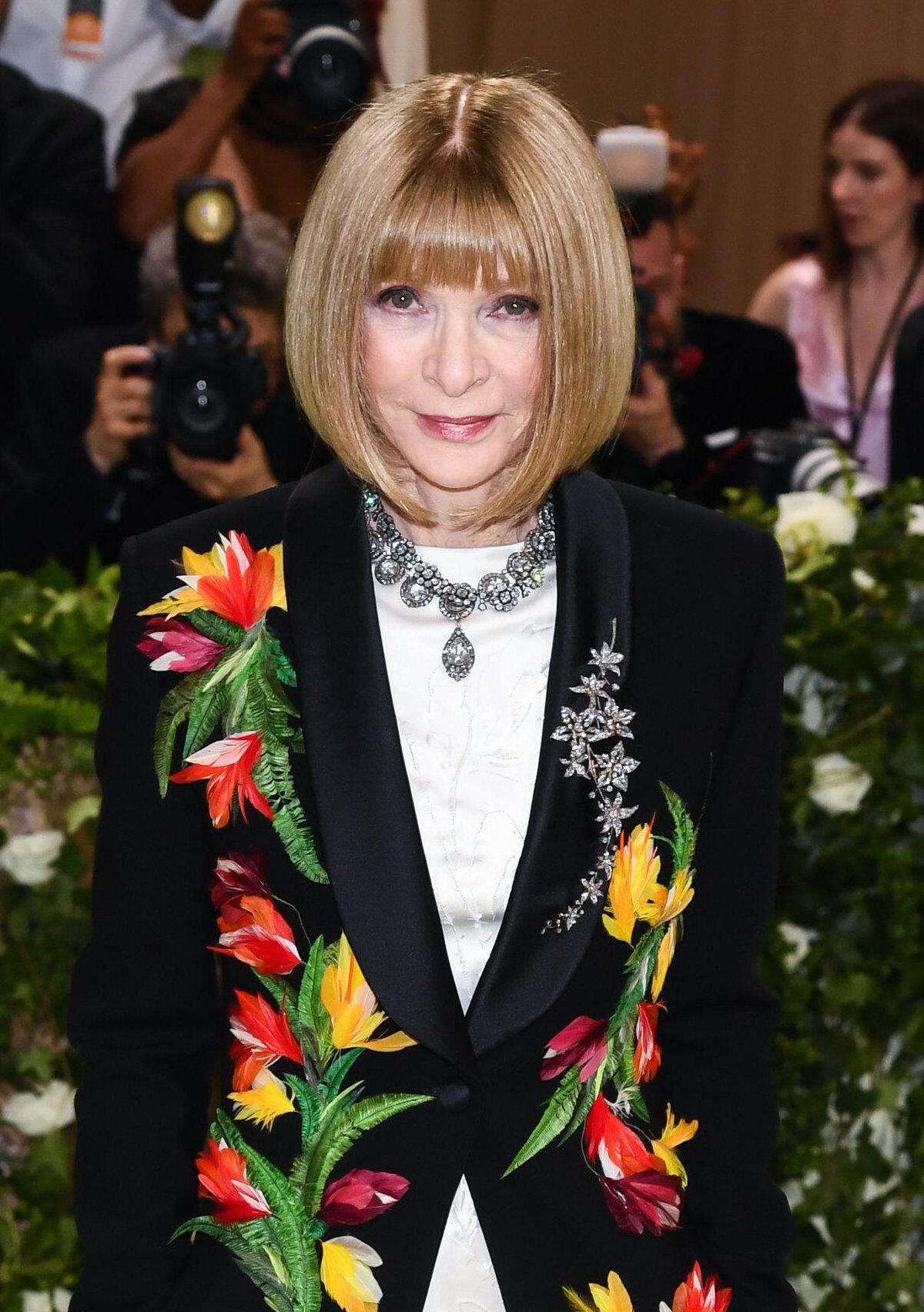
For her appearance in the James- and Worth-inspired tuxedo coat at the Met Gala, Anna Wintour added even more floral sparkle with pieces of her signature antique jewelry. Wintour is a noted fan of antique paste jewelry, especially pieces from the Georgian period. Most of her jewels are sourced from S.J. Phillips, the antique shop now located on Bruton Street in Mayfair.
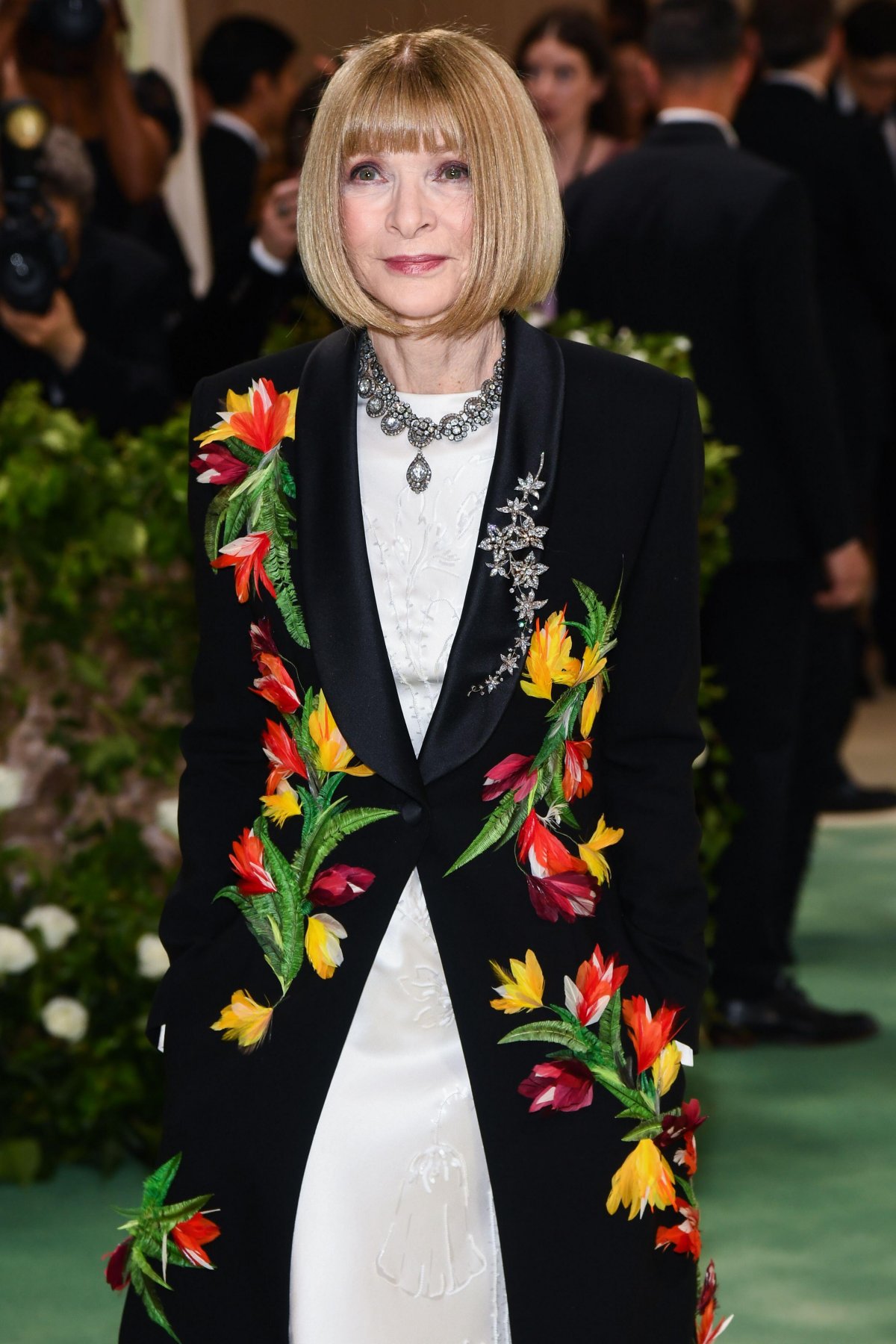
For the Met Gala, she layered two antique necklaces. One necklace has a floral design, and the other has a distinctive pendant section.
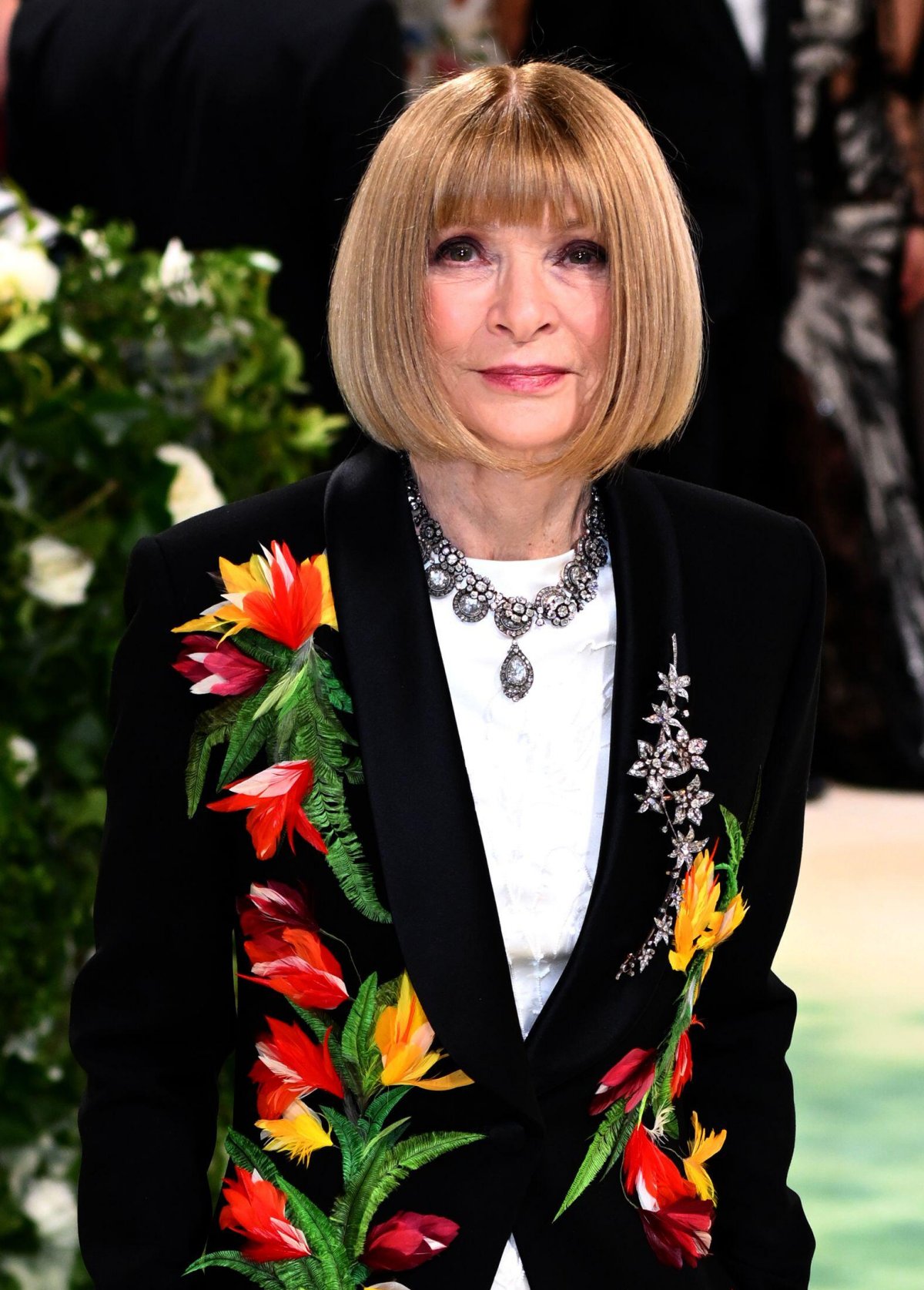
Even more sparkle was added thanks to a floral ornament pinned to the shawl collar of her jacket. WWW Jewels reports that the floral spray is also a piece acquired through S.J. Phillips. While the necklaces that Wintour wears are generally paste, the floral ornament sparkles with genuine diamonds.
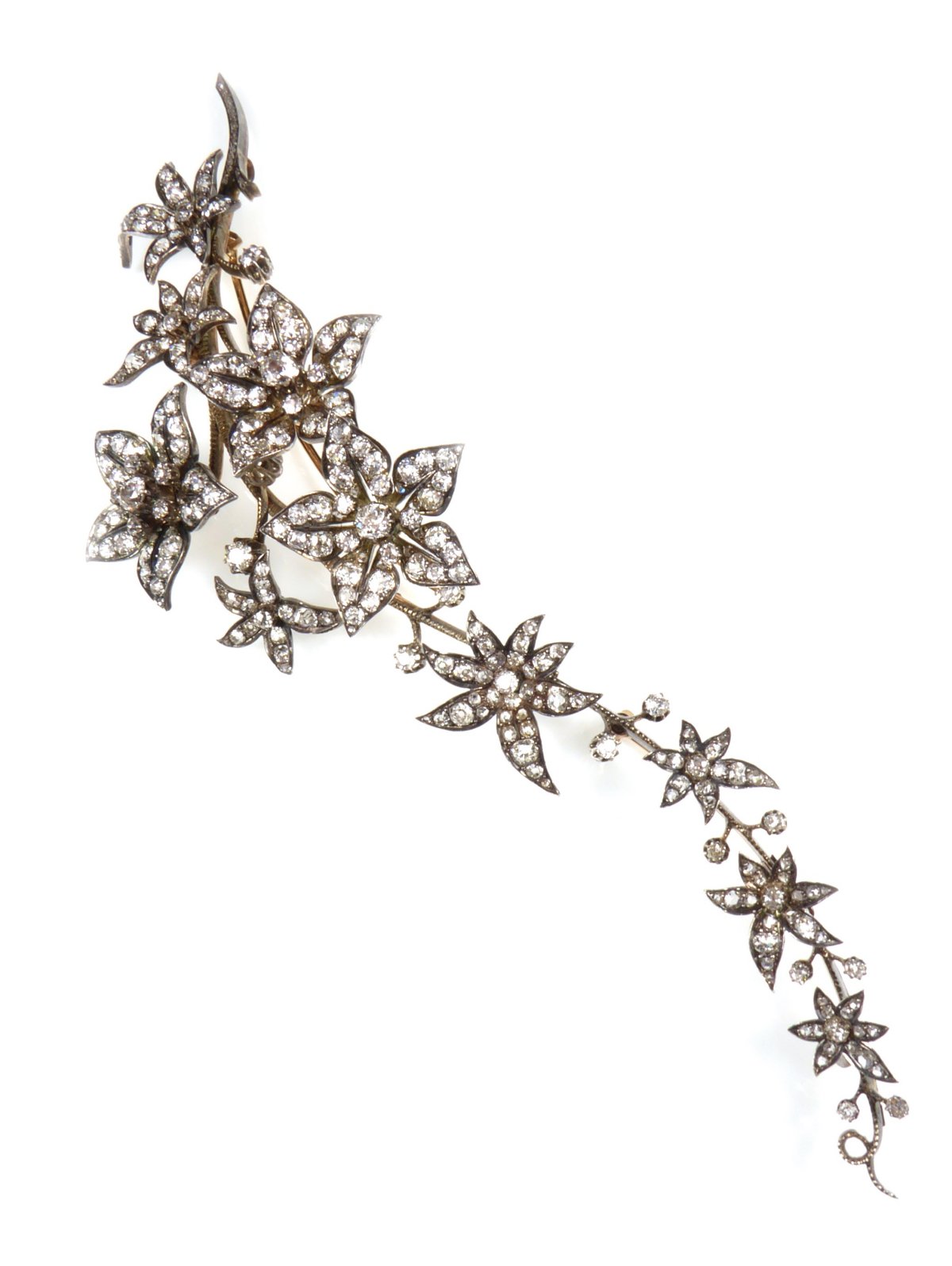
Indeed, the brooch is still featured on the S.J. Phillips website. It’s listed as a “19th century diamond tremblant hanging spray of flowers brooch, Vever, Paris c.1860, possibly a variety of campanula.” The firm describes the piece as “designed as a trailing S curve stem set along supporting graduated flowerheads, three mounted en tremblant, each with five, six and seven pointed leafy-petals and with single stone to centre, the diamonds of cushion and old brilliant cut, the lower section articulated on a pendant loop and detachable for wear as two separate brooches, the larger one with the tremblant flowers, open set in silver and gold.”
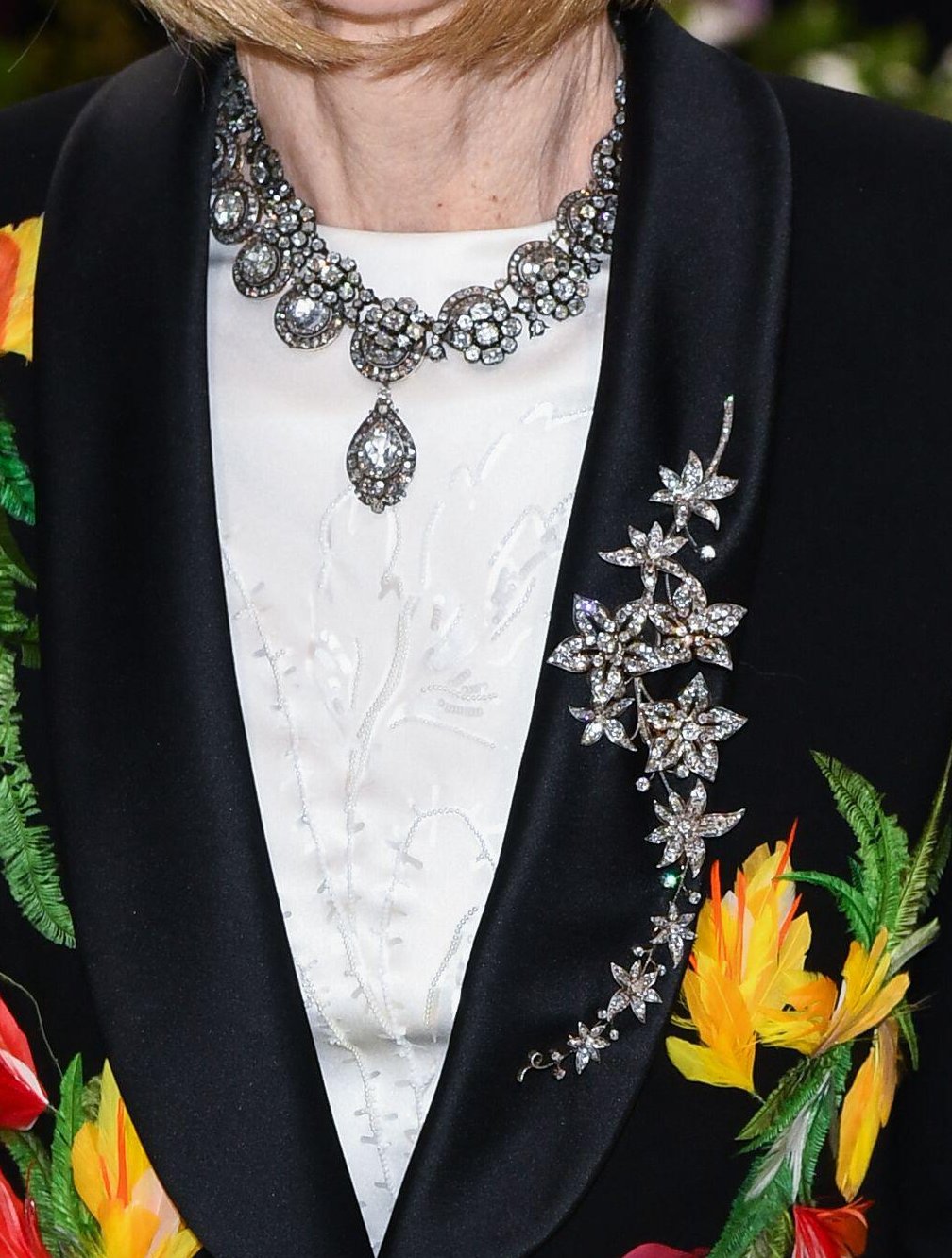
Here’s a closer look at the necklaces and the large floral ornament from Monday’s gala.

So that’s how a Worth cape donated by a Danish princess and an antique diamond floral spray are linked to the Vogue editor’s Met Gala ensemble. What did you think of Dame Anna’s choice for the gala this year?
Leave a Reply
You must be logged in to post a comment.